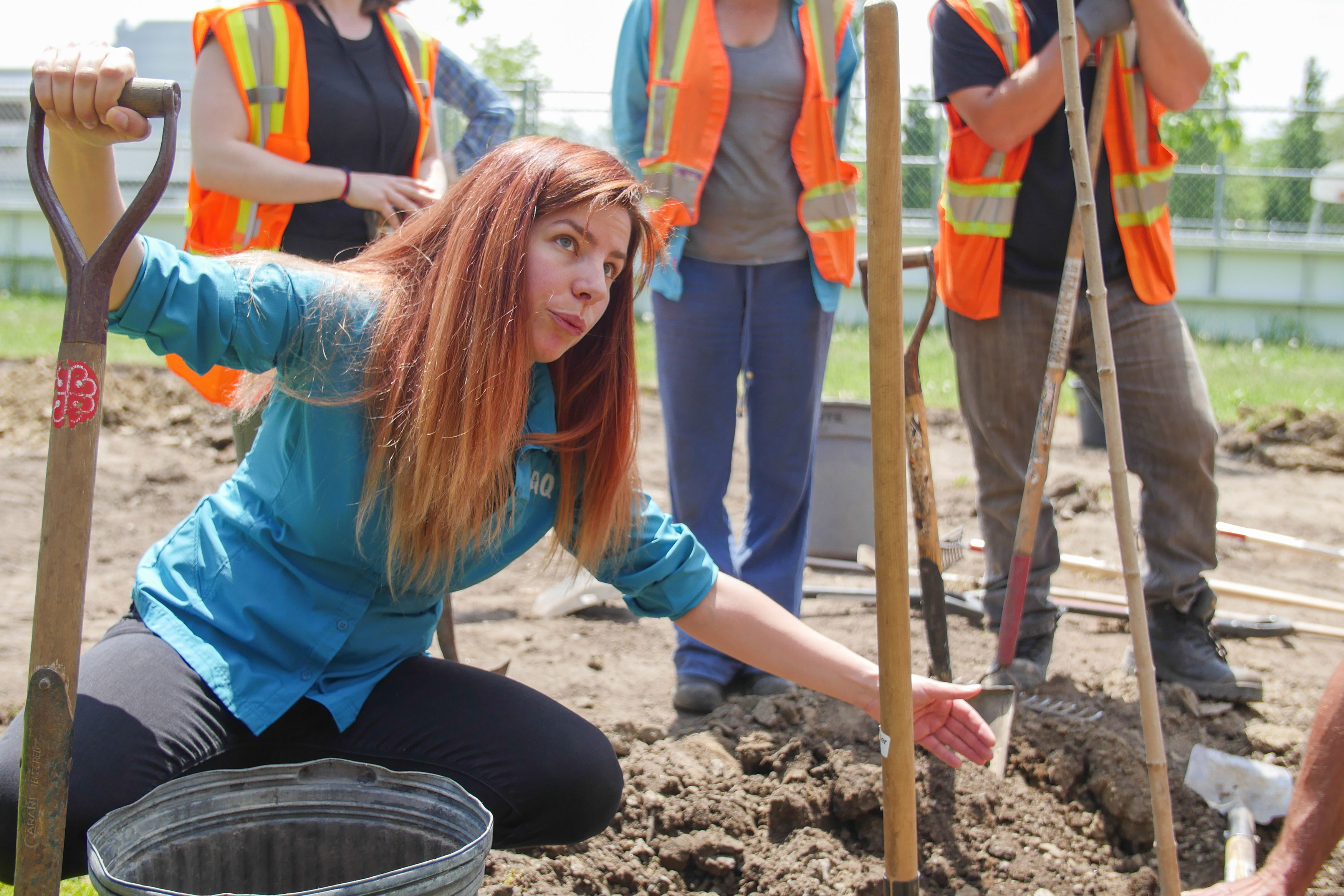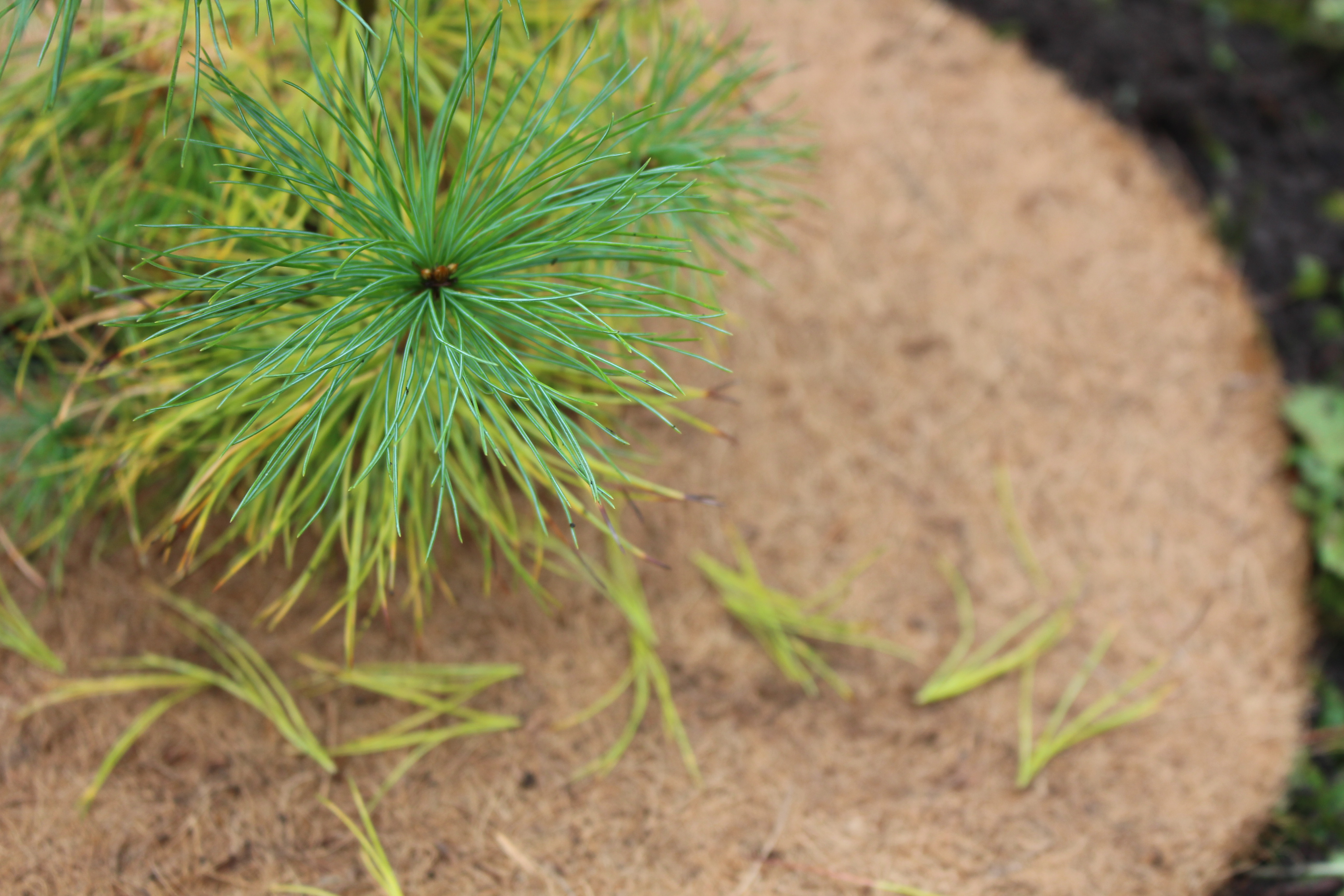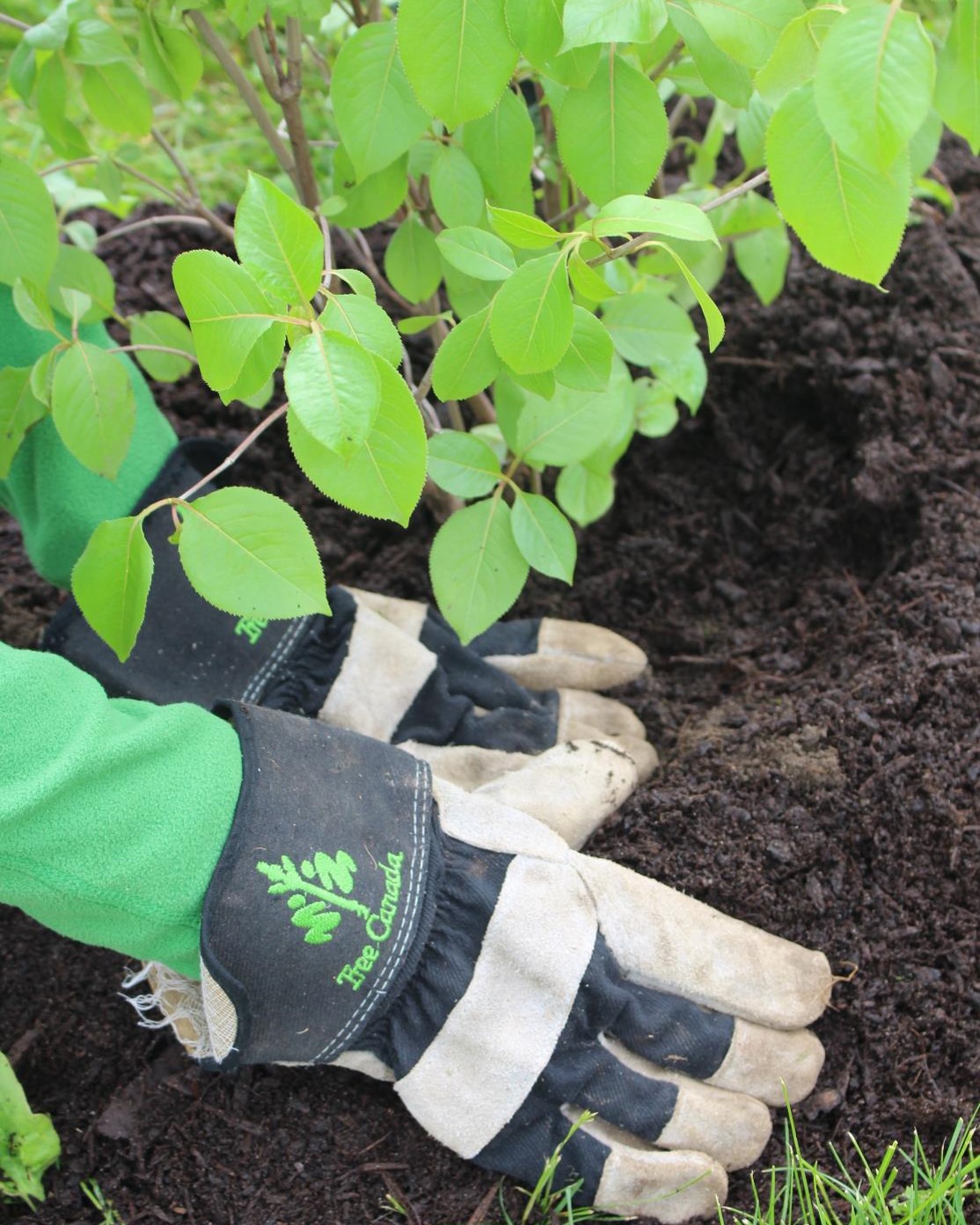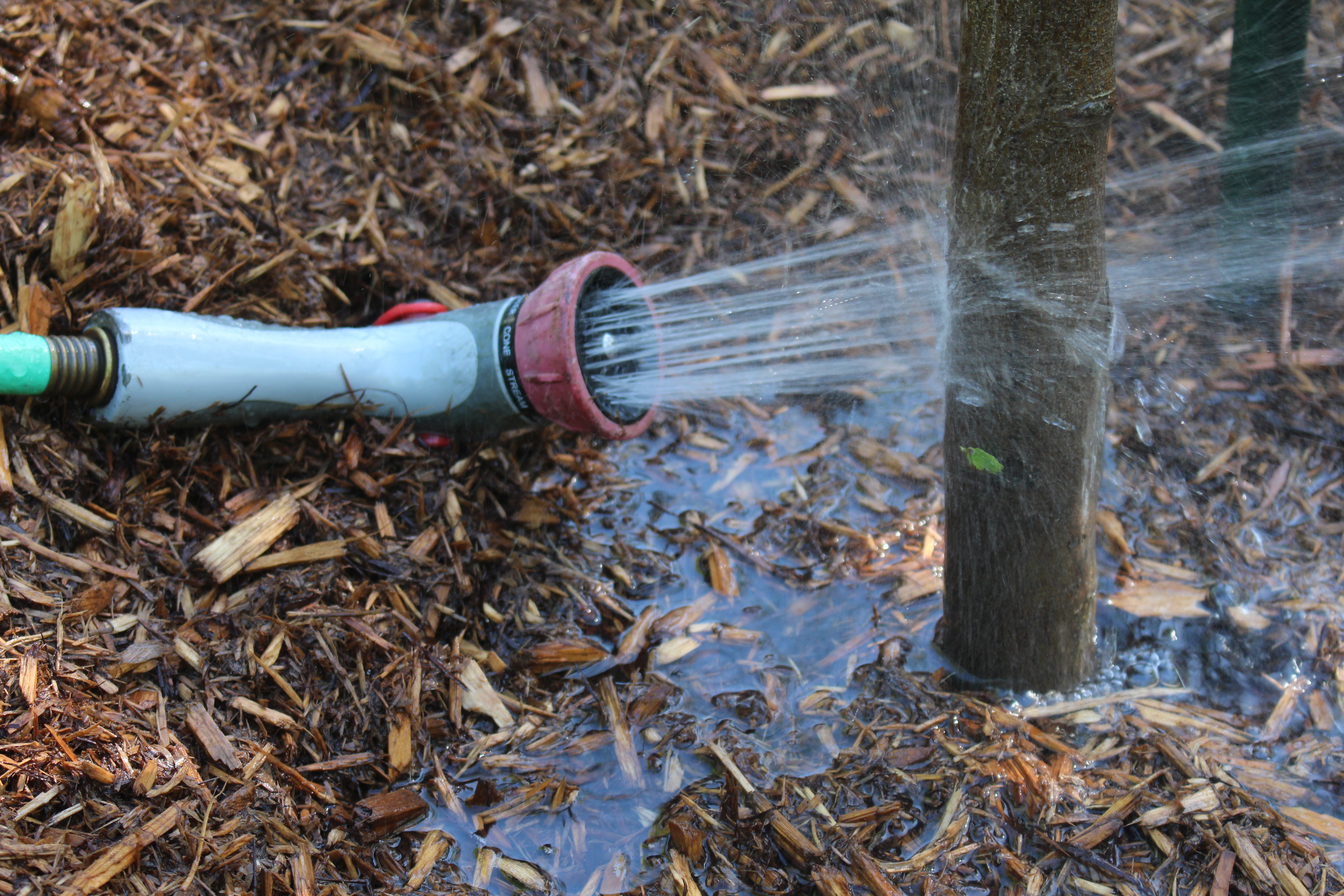What Is the Best Tree to Plant Near a House


How to establish a tree
Trees make our world a beautiful place. They provide us with many lasting benefits – shade, privacy, increased property value, shelter and food, and they contribute to our mental well-beingness.
Planting trees is one small way each of us tin can help improve the environment. Tree planting is easy if you follow these simple steps and remember to "keep the green side upwards!"

Program Ahead
Recollect about what the tree volition await similar at maturity. How tall will information technology abound? What shape volition it accept? Will it fit in the space you take in one case it is full-grown? Would a coniferous (evergreen) or deciduous tree work better in your landscape?
A tree'south shape, height, size at maturity and function in your landscape will determine the all-time tree to plant in a detail location.
Before doing whatsoever digging, brand sure to request underground utility locates to cheque for buried cables and wires on your property. Telephone call your local municipality to learn who to contact and do not establish alpine-growing trees close to overhead utility lines.
Tree Canada encourages planting native species appropriate to your local climate, calorie-free, soil, moisture conditions, and space availability.

When to Plant
Deciduous trees tin exist planted in the jump, equally soon as the frost is out of the ground, or in the autumn, from leaf-fall until freeze-upwards.
Conifers can be planted early in the spring until 4 weeks after deciduous trees have opened their leaves, or in the autumn, from well-nigh the first week of August to the end of October.

Planting Steps
1. Minimize stress to your trees
Protect your tree well during transport by padding the trunk and branches gently with burlap and tying loose ends with soft rope or twine.
Institute as shortly as possible afterward delivery. If planting is not possible right abroad, store the tree in a cool, shaded area and water every bit needed to go on the roots and soil moist.
2. Prepare the planting spot
Dig a hole two to three times wider than the container or root brawl. The hole should merely exist equally deep equally the root ball. When placed in the hole, the root neckband (i.e. where the roots join the chief stem or body) should be equal to or slightly higher up the depth of the hole.
Roughen the sides and bottom of the pigsty to allow root penetration.
iii. Found your tree with care
For trees in containers, gently slide the root brawl out of the pot and into the pigsty. For burlapped trees, place the root ball in the pigsty and gently cut abroad the wire basket and burlap.
Found the tree so that the superlative of the root brawl is flush with the top of the pigsty and the tree is vertical. Fill the hole in and around the root ball with the soil removed from the pigsty or practiced quality soil. Do non return any grass or sod to the hole.
Gently pack the soil around the root brawl until the hole is 2-thirds total to remove air pockets. Fill the remaining infinite with water to settle the soil and let the pigsty to drain. End filling the hole with soil and brand a ridge of soil around the root brawl to direct h2o towards the roots.

Taking Intendance of Your Trees
Mulch: Apply two to four inches of mulch around the tree over the surface area of the root brawl to reduce the growth of weeds and retain water in the soil. Be sure to keep mulch two to three inches away from the torso of the tree.
Watering: Water slowly and deeply immediately after planting and one time a calendar week or more as needed during dry weather condition to keep the soil moist.
Fertilizing: Avoid applying fertilizer, except for bone repast or high phosphorus fertilizer, in the first twelvemonth after planting. A higher nitrogen fertilizer can be practical subsequently on for greening and superlative growth.
Staking: Staking trees is not necessary unless they are exposed to high winds or if the soil is shallow. Remove stakes after one year.
Pruning: Prune at planting to improve branch spacing and promote a strong structure by removing dead, damaged, or rubbing branches. Trees should be pruned while dormant in late fall or early spring.
These are general guiding principles for afforestment and care. For more specific information, please consult your local garden middle, commune agriculturalist, forester or forest technician, library, or tree nursery staff on proper planting procedures for private species.
More afforestment tips and Oftentimes Asked Questions (FAQs)
How exercise I end tree roots from damaging my foundation?
Tree roots cannot live in sterile mediums such every bit concrete and will never seek to penetrate foundation walls. Instead, tree roots will seek moisture and may enter leaking pipes (or foundations) in search of moisture. Ensure your stormwater and other drains are not leaking
In sure cases in that location may exist a unique combination of factors which allows foundation walls to crevice – this includes: the use of specific soils (such every bit marine clays) to exist backfilled against buildings, the conveyance of surface water from rooftops and roads to stormwater sewers, periods of prolonged drought, and where trees are also present withdrawing large quantities of water from the soil, the soils may shrink which allows the foundation to move in an outwards direction potentially neat the foundation.
Do not use clay as a backfill to your edifice, ensure as much surface h2o equally possible is immune to bleed onto your soils and non a stormwater drain and choose a species of tree who does not have a huge thirst for water (e.thousand. practise not choose silver maple Acer saccharinum)
How young a tree should I constitute?
Plant equally young a tree with a healthy root organisation as your site will permit. In high-traffic areas, larger trees will be needed.
Younger, smaller-sized trees have a higher number of roots than exercise older, larger-sized trees. Trees rely on stored starches in their roots when they are being transplanted until plenty new roots are grown to sustain tree growth. Transplanting a bigger tree means it has to exist on its stored starches in a lower number of roots and then information technology is more stressful for a larger tree to be transplanted than a younger tree.
How oftentimes should I water my tree?
For the first few years of your tree's growth, cheque the soil regularly and make sure information technology is always slightly damp. If it isn't raining oft, water the tree with iii bucketfuls of water twice a calendar week, or with the hose on a deadening trickle for fifteen to twenty minutes twice a week. Make sure you're not overwatering. If water is pooling around the tree or the soil is extremely wet after watering then water less frequently.
Still have more questions?
Read our main FAQs page for more questions about tree planting, tree maintenance and Tree Canada.
Tree planting myths and tree care urban legends
"Heighten your planting site with as much compost-rich acme soil as possible to ensure growth"
This is a myth. When a tree is planted in soil that is radically different than the original soil it is growing in, or when new soil is too rich, it can be harmful to the tree as the roots volition turn down to grow outside the planting hole, creating bug for the tree's roots not anchoring properly. Roots tin abound in a girdling status if the new soil they are planted in is very different than the soil it has originally grown in. When a tree is planted near a permanent structure made of physical (i.due east. retaining wall, business firm), roots may become girdled past being deflected from the structures.
The soil you are planting in should not exist radically changed or augmented with compost, try to get out the soil weather every bit native as possible. The tree'due south roots should be loosened upwards to encourage them to grow out and any girdling roots should be cut away when the tree is taken out of a container.
"After planting a larger tree, it must be braced and staked"
This is often unnecessary, except where in that location is bare root planting in a windy area where or where you are planting on a gradient – trees need to develop a strong support and reaction to wind and sway is important to ensure that it develops this wood. Unfortunately too ofttimes the stakes and wires are left on also long and the tree grows into these.
"The more than mulch the better"
Too much mulch can damage root growth every bit it creates low soil oxygen but high wet levels and can crusade insect root rot and other diseases, and affect soil pH or soil nitrogen levels
Use bawl or living perennial mulch, more inert than woods chips, to a maximum depth of three to eight cm (1"-3")
"Fertilize soon and often"
Fertilizer contains one or more than elements required for tree growth just should not be thought of as "food" – it is like a vitamin, not a meal and can actually stress newly-planted trees.
Apply a well balanced fertilizer (10-10-10) if soil and leaves appear to exist scarce and/or ii years before, or two years afterward any root injury but non presently later on tree is newly-planted.
"Control all instects as soon equally possible"
In that location are many insects who simply need trees for survival and do not harm them and tin can be helpful in decision-making other insects that may harm trees. Identify insects found on the tree to encounter which are beneficial and which are not before attempting to control them.
"To help offset root loss during planting, you should ever cut back the top of the tree"
This is a myth. Removing the meridian of the tree volition impede healthy growth considering information technology reduces the tree's chapters to photosynthesize. The tree's crown class, structure and development will be negatively affected past the removal of the summit live limbs.
Only the diseased, damaged or dead wood should be removed during the offset 5-x years afterward planting the tree.
Source: https://treecanada.ca/resources/tree-planting-guide/
0 Response to "What Is the Best Tree to Plant Near a House"
Postar um comentário